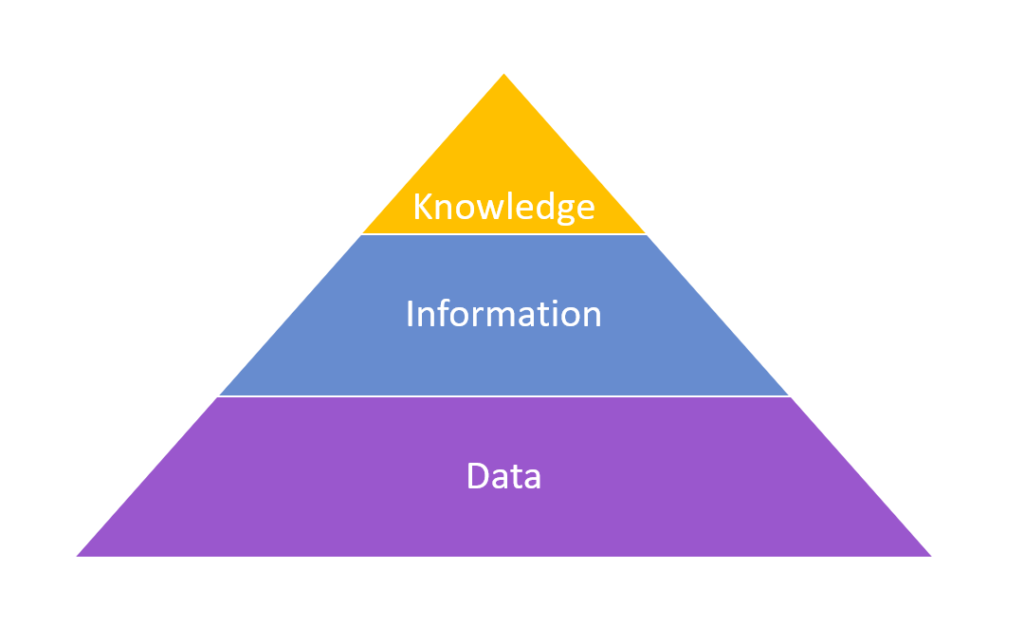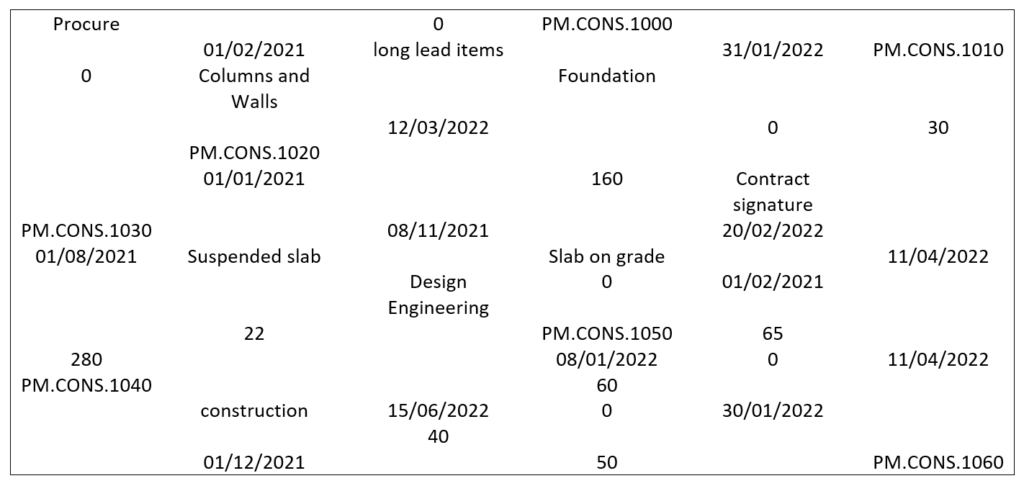
Data-Driven Project Management Explained


Over the last years, data has been the source of power and success for almost all businesses. It is no longer just a trend or a hypothesis but rather the new norm, and those who can leverage it properly are those who can gain a lot of competitive advantage.

We, as Proove, believe that the intelligent analysis of data leading to objective and informed decisions will play a critical role in the success of projects. Therefore, the need for data-driven project management (DDPM) is becoming a necessity, but what do we exactly mean?
First things first
Before diving into data-driven project management, it is necessary to understand and distinguish between data, information and knowledge, three concepts that are typically mistaken as synonyms.
First and foremost, data refers to unstructured facts and figures that are raw and lack any context. In fact, looking at data by itself means nothing, really nothing unless you can guess what does the data shown below represent?

Next, let’s look at information. Information represents data with a context. In other words, data that is organized, structured, has a purpose and a defined setting. Giving context to the data shown earlier we arrive at the following result.

Makes more sense, right?
Finally, knowledge indicates a finer level of understanding and know-how which is built based on information, experiences, contexts, values, and expert insights. When information is analyzed, one develops knowledge concerning this information however, it is no secret that knowledge comes in varying degrees, for example you can find someone that is good at something versus a true expert. Therefore, it is clear that one can build finer knowledge through time.
So, to recap, if you are looking at words, letters or numbers that you cannot understand its meaning, then you are looking at data. When context is added to data and you can understand what this data is about then you are looking at information. When you are looking at information and know how to use this information then you have knowledge.
Data-driven project management
Now that the definitions of data, information and knowledge are clearer, the next subject to discuss about is data-driven project management (DDPM).
It is no secret that many of the decisions we take in our daily and professional lives are not always backed up by facts or data. Think of the time you had to choose the team you will have to work with for a group project. The odds are that you almost always preferred a friend rather than a more skilled person to be in your team. In fact, that was just one small example of a decision influenced by one’s own intuition, feelings, surroundings, other more dominant people, experience, subjective perceptions, you name it. Of course, it is not wrong to have decisions influenced by those factors, however they are not the driving basis for data-driven project management. In fact, data-driven project management promotes decisions that are based on solid and objective data which at a later stage ought to be influenced by one’s knowledge. And as Edward Deming says, “Without data, you’re just another person with an opinion”.
The old way
It is clear by now that data is of utter importance for data-driven project management, and by data, I mean raw data. On a typical project some examples of raw data can be, activity dates, cost estimates, risk events, material quantities and much more. But what happens after this data is collected, how is it processed? Well typically in the old way, projects are managed based on documents. Therefore, after the collection of data, it is then processed by manually creating a new empty document which then gets filled in with these static data along with some description or context (in that case data becomes information if you are wondering). Can you spot the issues here?
Surely you came across some of the well-known issues such as having to create and manage thousands of documents in no time, or having to manually update inter-connected documents if the source data changed, or discovering that some of the data inputted in a document is incorrect or incomplete. What is important to note is that documents (information) capture data at a specific point in time. This is critical to understand since one of the recurring issues on a project is having some of the team members using an older version of a document, and of course everyone assumes having the latest version. Moreover, due to the human involvement in transferring data into documents, the data stored in a document can be incorrect unlike the data itself which is always correct and is dynamic.
For simplicity let’s consider the following; imagine you are working at a factory and collecting data concerning the number of units produced per day.

Obviously, on day 5, you have documented the units incorrectly, however this does not mean that the units produced is incorrect. Moreover, imagine you have separately reported the average production rates per day after both collections. Readers of your first report but not the second will not have the latest data in terms of the facility’s production rate. This does not mean the rate of the first collection is wrong, it only means that the rate got outdated.
Therefore, it is fair to conclude that the old way is error prone, slow, and leads to in effective project management.
The better way
Thankfully, the current advancement of technology tackles those issues to enable proper data-driven project management, hence for more information about the possibilities you might want to check out what we call project intelligence. However, in a nutshell data can be stored and processed in accessible databases, whether in the clouds or locally. You won’t have to worry about searching for the latest version of a document since the data you are seeing is always up to date. You can view dynamic dashboards and create reports with a click of a button! Data will be automatically analyzed, and notifications can be sent to the concerned team members, or even predefined response measures can be initiated. Of course, the intention of the automated analysis is not to replace the human intellect, but rather to speed the process and to allow data-driven project managers to focus on what they do best, taking decisions based on data-driven insights.
Besides, can you think of the value that could be derived from the historical data of your old projects? Well, for more about switching from project controls to project intelligence, we have another good read in store for you.
Undeniably, one of the challenges for data-driven projects is the exponential growth of project data. The last thing you want is to end up swamped with data as this can really paralyze analysis and taking decisions as much as the lack of data.
Final words
As projects are becoming more complex and the market is becoming more competitive, it is essential that companies stay ahead of the competition. Hence, with the advancement of technology, there are many means available to support better project management practices and that is precisely what we intend to do at Proove.
Ed. This article was written by former colleague Abdallah Baydoun.
Related content


